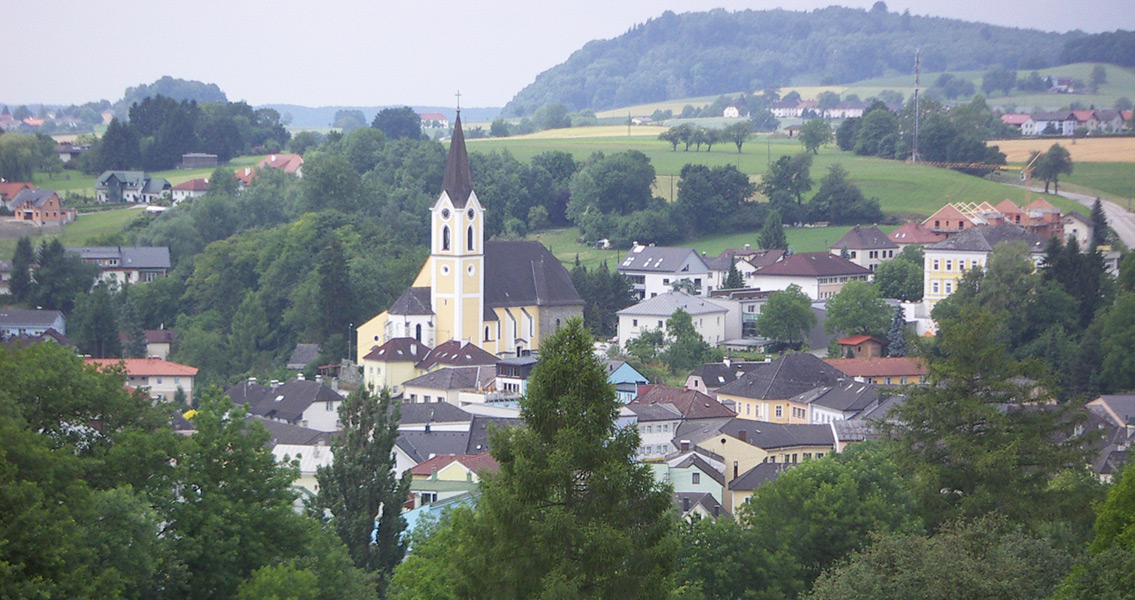<![CDATA[A filmmaker has found a secret network of underground bunkers used by the Nazis to develop an atomic bomb. Located in the hills surrounding the Austrian town of St. Georgen an der Gusen, the vast site covers an area of up to 75 acres. It is believed that it could be connected to the nearby Bergkristall factory, an underground facility where Nazi scientists and engineers developed the Messerschmitt ME 262, the world's first jet powered fighter plane. The Bergkristall factory was discovered and inspected by Allied troops after the war, but they appear to have missed the secret complex. After the war the underground complex of tunnels was abandoned, and for safety reasons filled in with concrete by local authorities ten years ago. Andreas Sulzer, the Austrian filmmaker who discovered the complex, is currently seeking permission to continue exploring the site. Excavations were halted last week after Austrian police informed the crew they needed to acquire a permit to continue digging. The team used heavy earth moving equipment to break through the concrete and earth covering the entrance to the bunker. Before work was halted, a number of SS artefacts had been extracted from the site. Sulzer was researching German scientist Viktor Schauberg for a documentary, when he came to believe that there was a secret Nazi atomic research centre; "Eventually I found out that from 1941 he was involved, under the strictest secrecy, in research projects for the SS in St. Georgen" Sulzer told the Austrian newspaper Krone, "In his letters he talks about splitting the atom." As Sulzer continued his research he came across a report from an American spy mentioning the existence of a secret weapons facility in the St. Georgen an der Gusen area. Unusually high radiation levels around the mountain site and other US intelligence reports helped Sulzer's team determine the exact location. It seems that the huge complex was constructed using slave labour from the nearby Mauthausen-Gusen concentration camp. Up to 320,000 prisoners were forced to work on the construction of the tunnels. Prisoners with specialist skills could have been brought from across Europe to work on the atomic bomb project, according to Sulzer, who told the Sunday Times "Prisoners from concentration camps across Europe were handpicked for their special skills - physicists, chemists or other experts - to work on this monstrous project and we owe it to the victims to finally open the site and reveal the truth" The newly discovered site has the potential to provide crucial evidence on just how advanced the Nazi atomic bomb program really was. The United States' Manhattan Project required 125,000 people and $30 billion to produce the two atomic bombs that were dropped on Hiroshima and Nagasaki. Although it is accepted that the Nazi's had an atomic bomb project of their own, it's usually assumed to have been a long way from actually producing a functioning nuclear weapon. Several historians, notably Rainer Karlsch, have argued in recent years that the Nazis were in fact very close to using atomic weapons, with Karlsch going as far as to argue that they actually carried out several tests in Germany and the Baltic Sea. His arguments have been largely discredited due to a lack of supporting evidence, but examination of the new site in Austria could provide important information on just how close the Nazis came to having an atomic weapon. Image courtesy of Wikimedia commons user: Rudolf A. Haunschmied]]>
Filmmaker Finds Nazi Atomic Bomb Research Bunker
